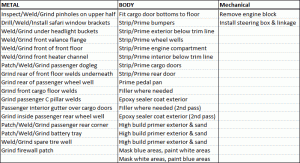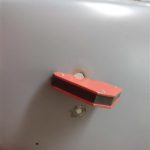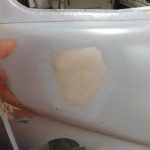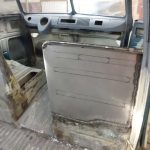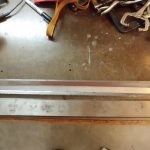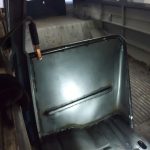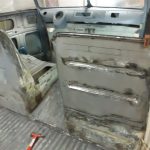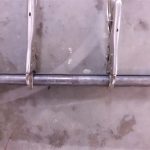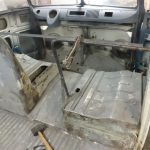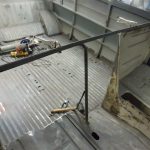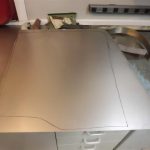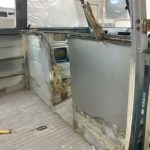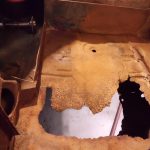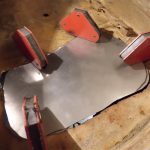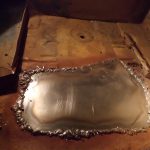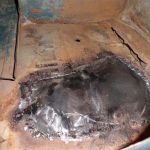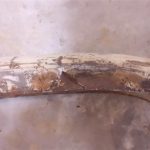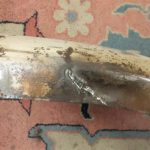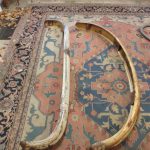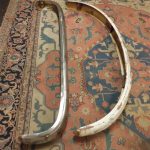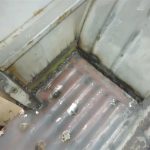The engine bay is now reasonably clean after many hours with a wire brush and warm soapy water. Everything above the seal flange will be painted with the rest of the bus, everything below will wait until the bus is mobile since I can then access the area more easily by driving onto ramps. Many other items were tidied up, mostly related to the front floor area which I had tacked into place after I first got the bus but had not been finalized. Scuffing of the exterior paint and rust treatments were done in anticipation of primer tomorrow.

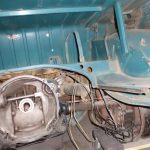
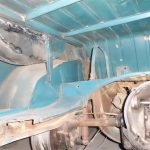
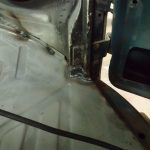
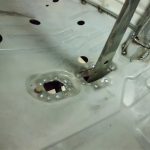
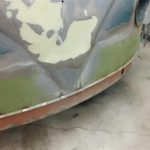
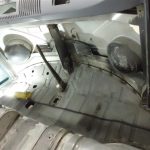
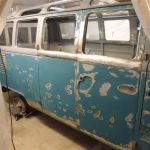

Engine removed, cleaning begins
The engine was removed and cleaning began on the engine bay. There’s a thick coating, up to an inch in some places, of muddy grime that’s covering both the lower and upper engine/transmission areas. The engine removal took less than 15min and it’s easy to carry around, cleaning will take much longer.
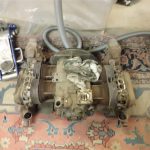
Safari Window Test Fit
The safari windows and emblem arrived today and work began on test fitting. Safari window hardware allows both of the front windshields to open upwards to let in fresh air. This was a factory option originally, however the option was not originally installed on this bus. A few of the brackets involved had to be welded to the inside window frame area, this had to occur before paint otherwise the paint would be burnt. However the brackets could not be properly positioned until all of the hardware was installed. So I fully installed the hardware, marked the bracket location, and then fully removed all of the hardware again. After this was completed I welded the brackets; the hardware will be re-installed after paint.
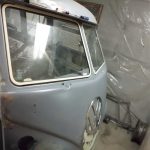
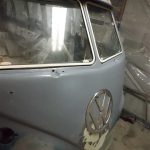
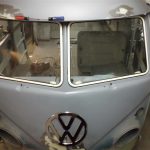
Planning…
Tonight I came up with a comprehensive list of all items that must be completed to make the bus a completed shell. Once the shell is completed the bus can be put on it’s final wheel/tires to allow safely raising to a height suitable to work on cleaning/painting on the underside. Once the underside is completed the mechanical/electrical reassembly and restoring/installation of small parts will begin.
